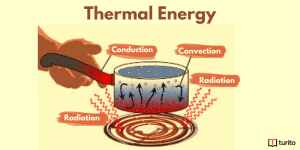While a transverse wave can be defined as one whose particles move at right angles to the motion of the particles of the medium, longitudinal waves are those whose particles move parallel to the direction of the movement of the particles of the medium.
These articles are focused on transverse waves and their articles. We also have an article where we have discussed the longitudinal waves in detail; you can check that out if you want to learn about them.
We hope that by the end of this article, you will know what is a transverse wave, what transverse wave definition and transverse wave example are, and will be able to answer most of the questions regarding transverse waves.
Waves can be found everywhere and can be described as disturbances traveling from one point of a medium to another. They are found in many different sizes and shapes.
While almost all of the waves have similar fundamental properties and behaviors, some of them can be distinguished from other waves based on certain noticeable properties.
One way to classify these waves is based on the direction of movement of their constituent particles relative to the motion of the particles of the medium. Classifying waves in this way gives rise to two main types— transverse and longitudinal waves.
What is a Transverse Wave?
Wondering what is a transverse wave and what is transverse wave definition? From the point of view of Physics, a transverse wave is a wave whose particles’ oscillations are at right angles to the direction of the wave.
We can demonstrate this wave by tying a string horizontally. One end of the string should be secured while the other has to be moved up and down. Another example of a transverse wave would be light waves, in which the oscillations are magnetic and electric fields, and they lie perpendicular to the ideal light rays that define the direction of propagation.
We can represent a simple transverse wave by a cosine or sine curve. It is named so because the amplitude of any point on the curve corresponds to the sine of an angle.

Sine curves of various different amplitudes have been represented in the figure. These curves show what a standing transverse wave looks like at consecutive time intervals. The time a point on the wave takes to complete an oscillation via the axis is referred to as the period of wave motion.
The frequency of the wave represents the number of oscillations completed by it per second. The wavelength of the wave is the distance between two adjacent troughs or peaks of the wave. Some transverse waves are complex, meaning their curves contain more than one cosine or sine curve.
Transverse waves are commonly seen in elastic solids. In this case, the oscillations correspond to the displacement of the particles of the solid from their ground state in a direction at right angles to the propagation of the wave. As these displacements correspond to the material’s shear deformation, these transverse waves are referred to as shear waves. These shear waves are also called secondary or S-waves in seismology.
Examples of Transverse waves
Following are a few examples of transverse waves:
- Ripples that form on the water’s surface due to slight disturbances are transverse wave examples.
- Stadium or a human wave
- Secondary waves that follow an earthquake
- Waves in the ocean are transverse wave examples.
Transverse Wave Speed
A transverse wave consists of crests and troughs. The crest corresponds to the highest point of the wave, while the trough corresponds to the lowest point or the bottom point. Below is a diagram showing a visual representation of the crest and troughs of a transverse wave.

Other Terminologies Related to Transverse Waves
Wavelength
The wavelength of a transverse wave is the distance between two corresponding troughs or crests on the wave.
Period
The period of a transverse wave is the time taken for two adjacent crests to cross a fixed point.
Frequency
The frequency of a transverse wave refers to the number of wavelengths crossing a certain fixed point in one second.
How to Calculate the Speed of a Wave on a String?
We can calculate a wave’s velocity by dividing the distance it traveled in a given time by the time taken to cover that distance. For transverse waves, this velocity can be obtained by dividing the wavelength by the period as such:
v = λ T
If we take the inverse proportionality to frequency and period and apply it here, we get:
v = λ T
v =λ f
Speed of a Wave on a Vibrating String
Musical instruments like guitars and pianos make use of vibrating strings to form musical notes. On this type of string, the speed of a wave is directly proportional to the square root of the string’s tension. It is also inversely proportional to the square root of the string’s linear density. This can be formulated as follows:

Reflection of Transverse Waves
The reflection of a transverse wave depends on whether or not it is fixed at both ends. Let us first discuss a situation where both ends of the waves are fixed.

The image above represents a transverse wave reflected from a fixed end. Wave reflection occurs when a transverse wave meets a fixed end, but the reflected wave is inverted. This causes swapping of the crests with troughs and vice versa.
How do we identify the types of waves?
The displacement of particles in a transverse wave occurs perpendicular to the direction of propagation of the wave. Examples of such waves are ripples forming on the surface of water or vibrations on the string of a musical instrument. A horizontal transverse wave can be made by the movement of the slinky vertically in upward and downward directions.

The displacement of particles in a longitudinal wave occurs in a direction parallel to the propagation of the wave direction. Examples of such waves are the compressions moving across a slinky. A longitudinal wave of horizontal type can be formed by pushing and pulling the slinky in a horizontal direction.

How to Identify a Longitudinal Wave
In a longitudinal wave, the particles constituting the medium move in a direction parallel to the direction of wave propagation. Imagine the stretching of a slinky horizontally across a classroom and the introduction of a pulse across its left end by causing vibrating movement of the first coil to the left and the right. Energy will flow across the slinky from left to right.
As the energy flows from the left side of the slinky to the right side, there will be displacement of the individual coils of the medium to the left and the right. In this situation, the movement of the medium’s constituent particles is in a parallel direction to the movement of the pulse. This is an example of a longitudinal wave. In such waves, the direction of the motion of the particles is always parallel to the direction of the wave propagation.
Are sound waves longitudinal or transverse? Another classical example of longitudinal waves is sound waves traveling through the air. As there is a movement of the sound wave from the lips of the speaker to the listener’s ears, the air particles vibrate back and forth in the same direction and in a direction opposite to which the energy is transported. Each particle is pushed in the forward direction by its neighboring particles.
The collision of a particular particle with its adjacent particle causes its restoration to its original position and displacement of the adjacent particle in a forward direction. This movement of particles to and from in the direction of the transport of energy produces regions within the medium where the particles collide and some other regions where the particles move away from each other.
These regions help in the quick identification of longitudinal waves. The phenomenon continues across the entire chain of particles until the sound wave reaches the destination, that is, the listener’s ear.
Conclusion
This article has discussed all the aspects related to the concept of transverse waves and several other related concepts. We hope that by the end of this article, you will be able to answer most of the questions regarding transverse waves like what is a transverse wave, what its characteristics are, what transverse wave definition is, and how it can be differentiated from other types of waves.
Frequently Asked Questions
Q1.What does a transverse wave mainly depend on?
A) A transverse wave mainly depends on the characteristics of the medium in which it propagates.
Q2.What is the amplitude of a transverse wave?
A) The amplitude of a transverse wave is the displacement of a particle from the point of equilibrium to the maximum extent.
Q3. Can a transverse wave propagate through any medium?
A) Transverse waves do not require a medium for their propagation. They can even propagate through a vacuum.
Q4. Are sound waves longitudinal or transverse?
A) Sound waves are a type of transverse wave. The direction of movement of their individual particles is parallel to the direction of wave propagation.

Relevant Articles
Understanding Thermal Energy: What It Is and How It Works
Thermal energy is essential to our daily lives, from warming …
Understanding Thermal Energy: What It Is and How It Works Read More »
Read More >>Avogadro’s Number: Meaning, Importance, and More
Introduction The concept of measuring the microscopic particles that make …
Avogadro’s Number: Meaning, Importance, and More Read More »
Read More >>Kinetic Friction – Definition, Laws, Types
Kinetic Friction Kinetic force is a force acting between two …
Kinetic Friction – Definition, Laws, Types Read More »
Read More >>




















Comments: